Potato variety Lileya (Lileya Belorusskaya)
Lileya is an early table potato variety (Solanum tuberosum) of Belarusian selection. It was bred by the staff of the Republican Unitary Enterprise “Scientific and Production Center of the National Academy of Sciences of Belarus for Potato and Fruit and Vegetable Growing”, it was officially named “Lileya Belorusskaya”. Under this name, it was included in the state register of plants of the Russian Federation in 2008. Approved for cultivation in four regions of the country: North, North-West, Central, Volgo-Vyatka. Differs in low digestibility of tubers and resistance to many diseases of nightshade. Suitable for machine cleaning. Widespread in many regions of Russia.
The period from full sprouting to ripening is 65-70 days.
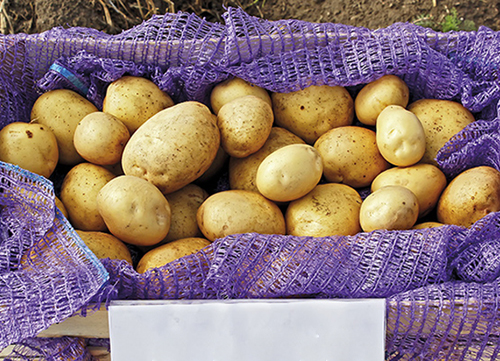
Plant of medium height, intermediate type, moderately spreading. The main stem is semi-erect or erect, with an abundant amount of green mass. Leaves of medium size, intermediate type, green in color, slight waviness is observed along the edges. The flowers are quite large, collected in corollas of white color.
In Lilia's nest, about 8-15 large oval-round tubers are formed, with an average weight of 100-200 grams each. The tubers of this potato are distinguished by their evenness in size and weight, there are very few small ones. The rind is yellow, dense, smooth to the touch. The pulp is light yellow in color, does not darken when cutting and boiling. The eyes are small, shallow.
Marketable yield, according to the results of state tests, is noted in the range of 246−392 c / ha, at the level of indicators Nevsky... The maximum amount was obtained in the Vologda region - 407 c / ha, 87 c / ha more than the standards Elizabeth... According to the originator, the potential yield can reach 670 c / ha. Marketability of tubers 79−97%, keeping quality 90%.
The taste is very good. The variety is classified as low-boiling, the pulp has a pleasant consistency, while it is quite dense, medium crumbly, it contains about 11.4-17.5% starch. During heat treatment, the tubers retain their shape and color, so the finished dish looks neat and attractive. The tubers are great for frying, stuffing, baking, boiling, making fries and salads. They are also suitable for industrial use for processing into semi-finished products and vegetable mixtures. These potatoes are not particularly suitable for mashed potatoes. By the way, tubers almost always have a fairly flat surface, which makes it easier to clean them.
Lileya is relatively undemanding to soils and climatic conditions, but it is more suitable for growing on medium and light soils in terms of particle size distribution, that is, for sandy loams and light loams. Our hero is distinguished by a very intensive growth of green mass, as well as early tuberization and rapid formation of the crop in the first half of the growing season. In this regard, the first digging can be carried out a little earlier than full ripening. There are several subtleties of growing this variety and caring for it, the main ones are shown in the list below.
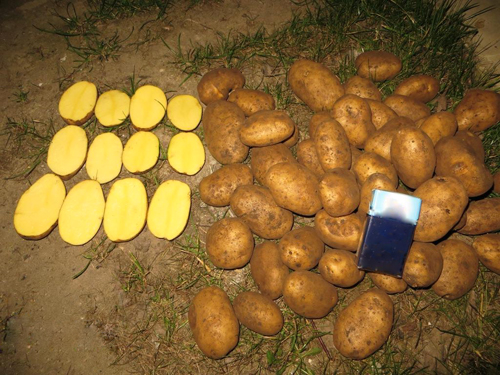
- Seed material should be selected and calibrated before planting. Small specimens without mechanical damage and signs of disease and pests are best suited. Tubers do not have to be etched with chemicals, you can also use folk remedies for prevention, but treatment with growth stimulants will not be superfluous.
- The originator provides recommendations for planting density of potatoes. So, when growing in order to obtain marketable products, it is necessary to plant 50-55 thousand tubers per hectare of area, and in order to obtain seed material, it is advisable to plant 60-65 pieces / ha.
- Plants are very responsive to feeding. It is especially important to provide them with mineral complexes, since they quite actively use soil micro- and macroelements.If necessary, you can apply nitrogen fertilizers, but you need to be careful with them - with their increased amount in the soil, the growth of tops is activated, and tuberization is noticeably slowed down. During the season, it will be enough to feed two or three times. The dosage of the introduced complexes is calculated based on the composition of the soil in your area and the region of cultivation.
- Lileya is undemanding for watering, but you should still protect the soil from drying out or waterlogging. Water the plantings as needed; in regions with cool and rainy summers, this may not be required at all.
- Standard agronomic measures have a very positive effect on yields. Do not forget to huddle the planting in a timely manner, loosen the soil, get rid of weeds. As for preventive treatments against pests and diseases, these potatoes are required in minimal quantities, and in favorable seasons they can do without them at all.
- Some sources report that this variety is resistant to degeneration, but the seed should still be renewed when the time comes if the tubers begin to shrink and take on ugly shapes.
- Don't forget about crop rotation. If you neglect this point, the likelihood of infection of plants with diseases typical of nightshades increases, even though our hero has a large list of invulnerabilities. The best predecessors are cabbage, zucchini, beets, onions, cucumbers, garlic, legumes, green manure.
It's time to say about Lilia's resistance to cancer, cyst nematodes and viruses. One of the main advantages of the variety is the immunity of tubers and tops to late blight. It is thanks to the last point that our hero is popular with gardeners throughout Russia.
During its ten years of existence, this potato managed to receive a fairly large number of positive reviews. It is especially appreciated for its high yield, very good taste, large uniform tubers and their early amicable ripening, as well as excellent presentation. Gardeners also note the excellent keeping quality of tubers - they can be stored for about a year without losing consumer and marketable qualities, while not germinating for a long time. Another advantage is their resistance to mechanical damage, making them suitable for machine cleaning.
A separate point should be noted and the relative undemanding to growing conditions. The variety is actively grown in many regions, both on an industrial scale and in small household plots. With minimal care, plants are capable of producing a large amount of harvest, moreover, weather conditions have a rather insignificant effect on this indicator.
The disadvantages of the variety can be attributed only to the poor digestibility of tubers, however, this is more a feature, and not a disadvantage. Otherwise, Lileya is a very good, reliable potato that can delight you even in the most unfortunate seasons!
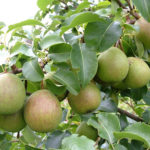
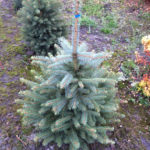

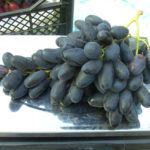





Lileya is one of our favorite varieties. We usually plant in early May, and, subject to warm weather, by the end of July we are already harvesting rather large tubers. Productivity is consistently high for three years: many tubers and almost all large ones. In the fourth year, we noticed a decrease in yield, so in the fifth year the variety was renewed.
The care is standard. The variety is responsive to the introduction of complex fertilizers, but you need to be careful: if you overfeed, the tubers come out very large, but with voids inside.
We store part of the harvest in the basement of an apartment building.It is far from the best place for storing potatoes, but even in such conditions, it remains until the end of spring.